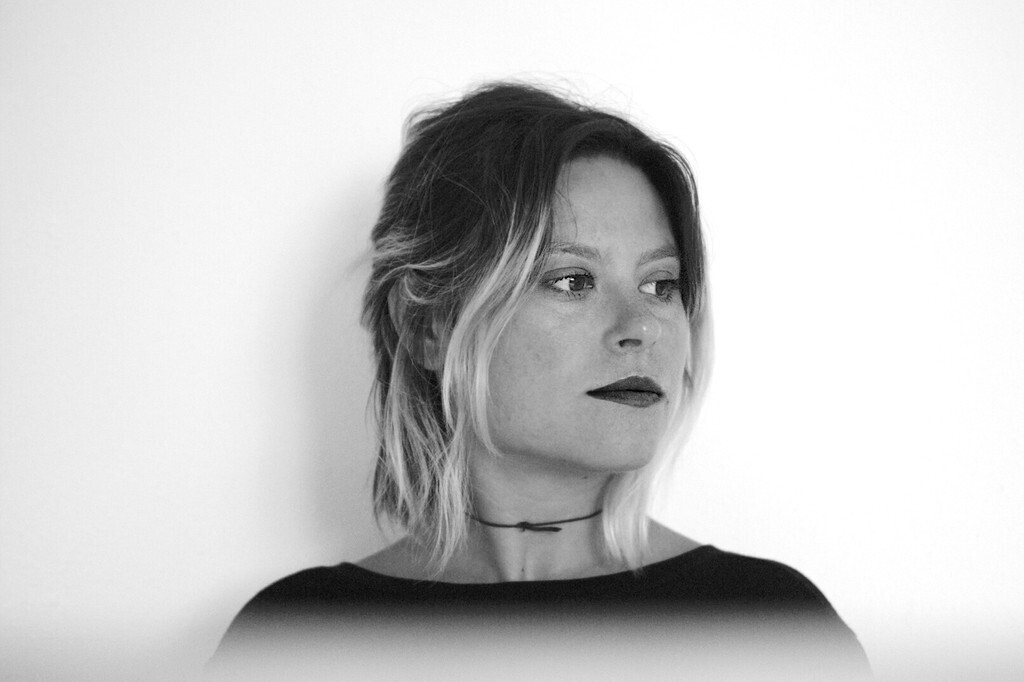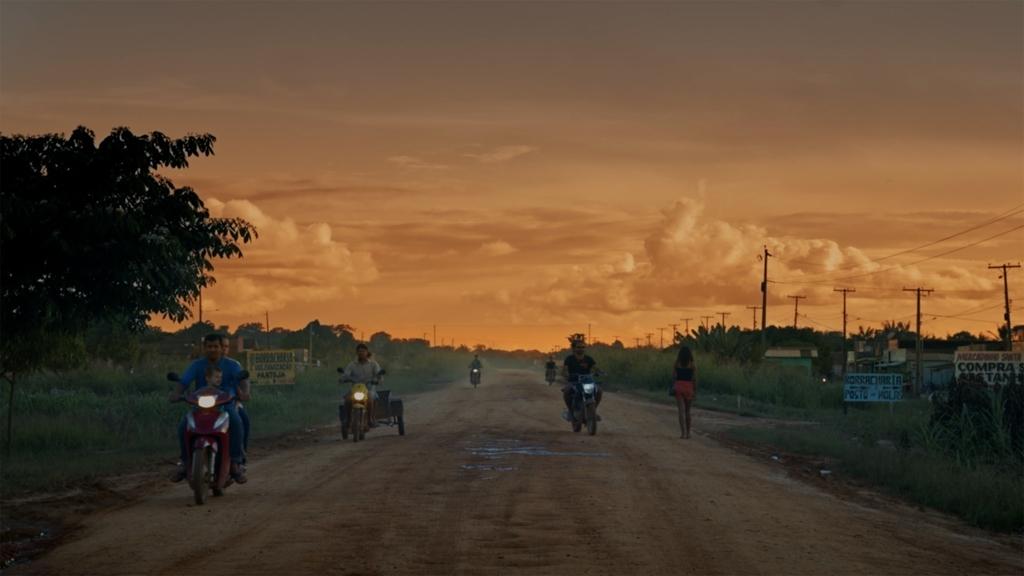Brazil’s Political Ghosts
Janaina Wagner On Curupira and the Machine of the Destiny
Filmmaker Janaina Wagner, part of the Berlinale Talents 2023 class, talks about her past and future projects.

Curupira and the Machine of the Destiny, which screened at the London Short Film Festival’s international competition, is one of the most magnetic cinematic phenomena you can encounter in a dark room. I myself shared a very special moment with this film on the last day of Vienna Shorts in the summer of 2022, and I still can’t quite put my finger on the way in which filmmaker and visual artist Janaina Wagner, who is part of the Berlinale Talents 2023 Doc Station class, manages to transform the viewer by inviting them to share a past, present, and future—all told at once allegorically and in politically urgent factuality. Quite tellingly, one of the film’s topoi is a place called Realidade (Reality), an actual name of an actual district at the end of Brazil’s BR-319 federal highway and this is just one example of Wagner’s take on the reality/fiction dichotomy.
So first of all, we have your beautiful short film, which features remnants of a 1974 film [Iracema – Uma Transa Amazônica by Jorge Bodanzky and Orlando Senna], which itself was inspired by a novel from the 19th century. How did that genealogy inform your work at the early stages?
At the very beginning, for me, there was the creature, Curupira, which is still related to the kind of work that I’ve been doing on the image of the werewolf and other mythological stories. I’m trying to take a look at our society, our history, and our stories through an external figure and I needed a figure that could also be a tool of analysis of some sort, to look at the situation of deforestation and destruction of the environment that was happening in Brazil during the four years of Bolsonaro’s government. Now hopefully, we are entering a new era for Brazil as Lula is back. We feel that there is a future ahead of us, after years of destruction and disillusion. Even now, we are starting to see all of the dirt that is being dug up: the case of the Yanomami indigenous people dying of starvation because of the mineralization on their lands, their protected land.
Curupira is something that I have known since childhood; it’s known by everyone here in Brazil as the protector or protectress of the forest: if you, as a hunter, enter the forest, you have to make an offer in order to proceed and take what you want for your own survival. But if you take more than you need, then (s)he’s going to come after you and make you lose your way. So it’s a kind of a force of balance for the sustainability of the forest. Then I thought that it could appear as a characterisation of the future of Brazil, and in order to gain hope again, I would need somebody to go look for him or her…
So Curupira doesn’t have any gender, does it?
No, in some regions of Brazil, it’s ‘a curupira,’, and in others, it’s ‘o Curupira.’ So (s)he has this genderless quality, but I chose to have a female curupira.
And then you thought of Iracema?
I thought “Who is the future of Brazil?” A young girl, an adolescent girl. At that time, I was fictionalising the character, thinking, “Who is this girl? What is she gonna do? What is her role in life?”, as I was trying to construct her. Then it got to me that this girl already existed! Not only that, this girl is also a ghost from a classic Brazilian film. Iracema is an important document as it was the first docu-fiction and the first time images of the forest being burned were shown in Europe. So that was the first time that the world saw what was happening in Brazil. In this way, I no longer needed to find my young girl; I just needed to re-embody her in the present time.
At the beginning of my research, I went to Amazon for the first time. I found myself at one end of the road BR-319, where somebody told me, its other end finishes at a place that’s called the District of Reality (Realidade). When I heard this, I knew I needed to bring curupira to reality and I needed to bring the ghost of Iracema to reality—literally!
You even credited all the actresses as ‘ghosts of Iracema’.
For me, this film is a documentary because I believe in both Curupira and Iracema as concrete forces. All of these girls I think are Iracemas, as they continue to live by the road and wait for a better future to come. Because the situation is so stuck for them even if they really want something different, it is going to be hard for them to get it.
Did you always have in mind how the film is going to look in terms of colours, camera work, the aerial shots, the close-up of Iracema that appears towards the end? Because it seems like you managed to capture memories of the places. And those places themselves have memory, as this is also channelled through the camerawork.
It’s nice that this comes through! Because I believe in the memory of places. Before shooting, it was all just too abstract for me, as I’ve never been there. When I went and came back, I then developed the script with my background in fine art. Before having the movements or what was going to happen, I had storyboard images that I drew, of the sequences that I wanted to create. I knew exactly what I wanted, and it somehow happened. Aesthetically, I had it all very clear in my mind. On the other hand, we found Vitória Pereira, the main actress, only one day before we started shooting. I had a decoupage, sequence by sequence, but many, many, many things happened through magic.

Curupira and the Machine of the Destiny
So, of course, you would see it as a documentary because it captures this sort of magic happening by itself. I was also thinking about visibility and invisibility in the film. Because everyone’s talking about Curupira: Have you seen it? Have you not seen it? Who’s been seeing what—it’s all a bit unclear. How did you decide what the viewer should be seeing?
It’s funny because it links to this feature that I’m starting to develop. It’s a film about ghosts and really departs from the end of Curupira, the meeting scene. Since I believe in ghosts, I also wanted to make a film that was about the political ghosts of Brazil, the ones that linger in the landscape. I thought that maybe, to me, reality is this place where ghosts and people of flesh and bones are together, although sometimes they don’t see each other, sometimes they do. But I wanted to document a moment where ghosts and life, persons and creatures, were together. Maybe they don’t see each other, but we could see them for this slice of time.
Did you think that cinema is the best medium to capture ghosts and to represent ghosts? And why?
I don’t know; this is a big question for me. Because in the feature film I’m developing now, there is a big part that is trying to re-embody the ghosts of women through reels of film, through the physicality of it. I’m going to try to transform the stories into reels of film and have the stories trespass on one another through reels of film. The whole investigation itself is about what cinema can do or what the image can do as a medium to bring ghosts to us.
I wanted to ask you about these intertextual links, the poems you use at the film’s beginning and end. Do you have a pre-existing relationship with de Andrade?
I always work with a lot of collages, and I do so in this film: it’s a compilation of many references. I’m always quoting people that came before me, and the quotation can be literal or subjective. I’m a huge fan of Carlos Drummond de Andrade, and I’ve used texts before in two other films, actually. I think I had this poem “Mundo Grande” with me even when I was still only imagining what the scene was going to be like. In another film of mine, Ventura (2018) on robotic elephants, there’s also a poem of de Andrade. When somebody showed me the elephant, I thought: “This is the image of this poem!”, as if I was waiting for it to arrive.
Do you feel like there’s a shift in the way you talk about the film now, since Lula’s been elected president?
It’s really recent. And we’re still like, trembling a little bit after everything that’s happened.
But we’re already using the past tense now for the Bolsonaro years.
Yes, but I think that the way that I speak of the film now is not so different from the way that I was speaking before, because I was always thinking about it with a lot of hope. I chose to finish the film with this encounter, opening to something new and saying, “Oh, future life we’re gonna create you”. So it was something to look forward to. But I think if Bolsonaro got re-elected, then the way that I would be talking now, it would be different. When I was doing this film, I was doing it for the future. I think that now that we are in the future, I keep the way that I talk about it more or less similar because I was always looking forward to a change that would come.
